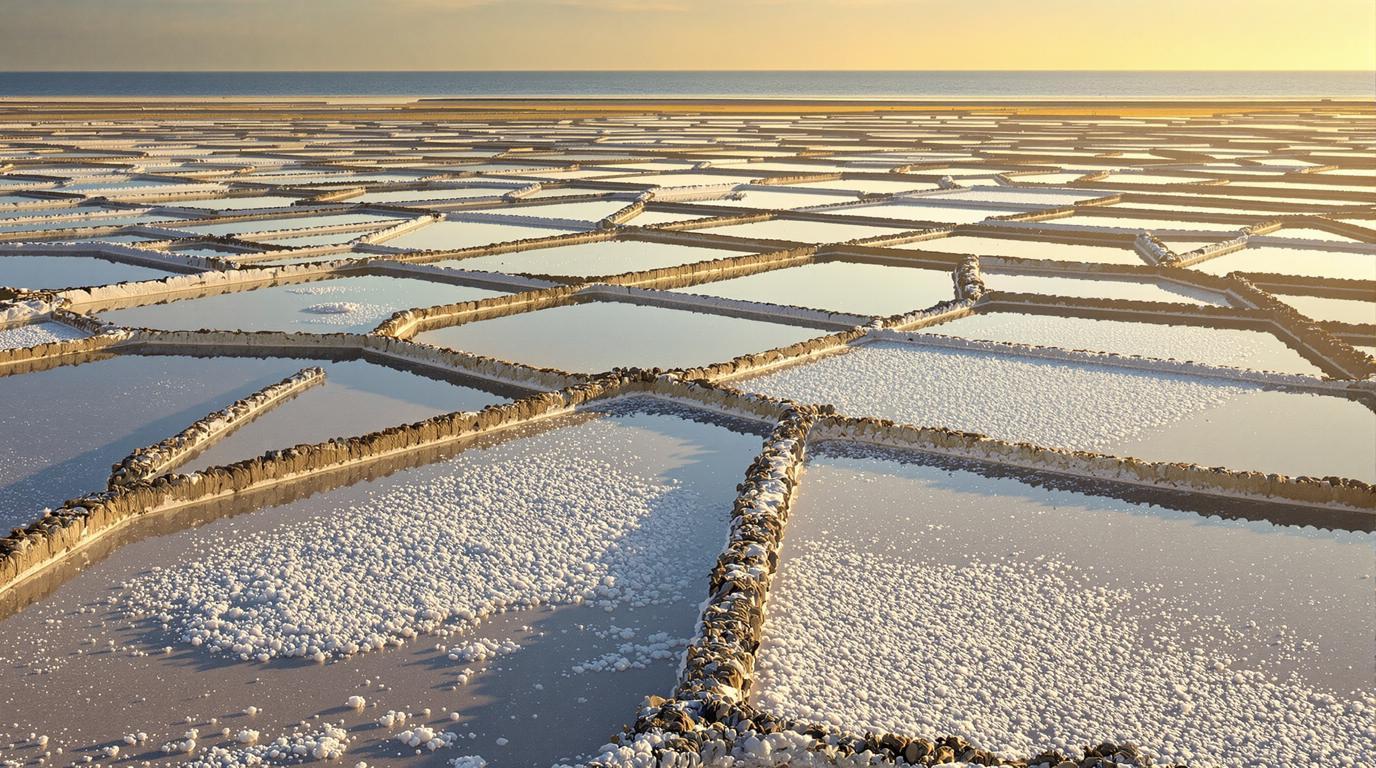The salt crystals crunch beneath my feet as I follow Pierre through the maze of shallow pools that stretch toward the Atlantic horizon. This 85-square-kilometer island harbors secrets that 18,000 residents have quietly protected for generations. While tourists flock to overcrowded Mediterranean destinations, the locals of Île de Ré have developed an unspoken understanding: some treasures are too precious to share carelessly.
Pierre, a third-generation salt harvester, stops at the edge of a pristine marsh where fleur de sel forms delicate crystalline flowers on the water’s surface. “We don’t advertise this,” he whispers, gesturing toward the untouched wetlands that support endangered bird species. “The more people who know, the less magical it becomes.”
This French Atlantic island operates on a different philosophy than its tourist-saturated cousins. Where other coastal destinations have surrendered to mass tourism, Île de Ré has chosen preservation over profit, authenticity over accessibility.
The environmental sanctuary locals fiercely protect
Salt marsh ecosystem under community guard
The Coopérative des Sauniers doesn’t just harvest salt—they guard an entire ecosystem. These 400 hectares of clay-lined basins support migratory birds, rare plant species, and traditional farming methods that have remained unchanged for centuries. Local salt makers work in harmony with nature, using wooden tools called lousse and simoussi to gather crystals without disturbing the delicate balance.
Community-led tourism restrictions
Unlike destinations that welcome unlimited visitors, Île de Ré’s residents have quietly implemented informal limits. The island’s bike-centric infrastructure naturally restricts access, while local businesses prioritize seasonal workers over chain establishments. This grassroots approach to tourism management keeps visitor numbers sustainable without official regulations.
The cycling paradise they don’t want Instagram famous
Car-free zones that preserve village authenticity
Village centers across Île de Ré have gradually become car-free sanctuaries where locals can maintain their traditional way of life. The narrow streets of Saint-Martin-de-Ré and Ars-en-Ré weren’t designed for tour buses, and residents intend to keep it that way. Cycling remains the preferred method of exploration, ensuring that only respectful travelers who move at island pace can truly experience the culture.
Hidden cycling routes locals guard jealously
Beyond the marked tourist paths lie secret routes that wind through private vineyards and secluded salt pans. These paths, known only to residents and a few trusted guides, offer glimpses of authentic island life. Local cyclists share these routes sparingly, understanding that overcrowding would destroy the very solitude that makes them special.
The artisan traditions under threat from tourism
Salt harvesting heritage at risk
The island’s 90 active salt makers represent the last generation of traditional harvesters in western France. Their techniques, passed down through families for centuries, face extinction if tourism transforms their working marshes into photo opportunities. The community has watched Mediterranean salt flats become sanitized attractions and refuses to let commerce corrupt their living heritage.
Oyster farming culture locals desperately preserve
Private oyster farms dot the island’s coastline, where local families have cultivated shellfish for generations. These operations remain intentionally small-scale and family-run, with many refusing to offer tourist tastings. The farmers fear that commercialization would compromise both their product quality and the intimate knowledge that defines their craft.
The seasonal timing that keeps their secrets safe
Winter solitude that locals cherish
From October through March, Île de Ré transforms into a different world. Restaurant closures and limited accommodation naturally restrict visitor numbers, allowing residents to reclaim their island. This seasonal rhythm, once driven by necessity, now serves as natural protection against year-round tourism pressure.
Summer harvest season they reluctantly share
The salt harvesting season from June through September represents the island’s most vulnerable period. While locals must open their marshes to limited educational tours to maintain economic viability, they carefully control access through small group sizes and strict behavioral guidelines. This delicate balance allows cultural preservation while preventing complete isolation.
The residents of Île de Ré have mastered something that eludes most popular destinations: the art of selective sharing. They understand that true preservation requires saying no to mass tourism, even when it means sacrificing potential revenue. Their protection of salt marshes, cycling culture, and artisan traditions offers a model for sustainable tourism that prioritizes community over commerce.
If you’re fortunate enough to visit this guarded paradise, remember that you’re entering a living community, not a theme park. Respect the cycling paths, support local artisans, and leave only footprints in the salt marshes. The island’s secrets have survived this long because residents chose preservation over profit—a choice that continues to define their relationship with the outside world.
Planning your respectful visit to Île de Ré
How do I access Île de Ré responsibly?
The island connects to mainland France via a single bridge near La Rochelle. Rent a bicycle immediately upon arrival, as cycling is the preferred and most respectful way to explore. Many locals appreciate visitors who embrace this slower pace of travel.
When should I visit to minimize impact on local life?
Shoulder seasons (May-June and September-October) offer the best balance of accessibility and respect for local rhythms. Avoid July and August when residents are already managing peak tourism pressure during the crucial salt harvesting season.
Which local businesses should I support?
Seek out independent salt cooperatives, family-run restaurants, and local artisan shops rather than chain establishments. The Coopérative des Sauniers offers educational tours that directly support traditional salt harvesting methods.
How can I experience the salt marshes without disturbing them?
Join small-group tours led by actual salt harvesters who can share authentic knowledge while ensuring minimal environmental impact. Never venture into working salt pans independently, as this can damage delicate ecosystems and disrupt ongoing harvesting operations.
What should I avoid doing as a respectful visitor?
Avoid bringing cars into village centers, don’t photograph working salt harvesters without permission, and resist the urge to share specific locations of hidden cycling routes on social media. The island’s magic lies in its discretion.
